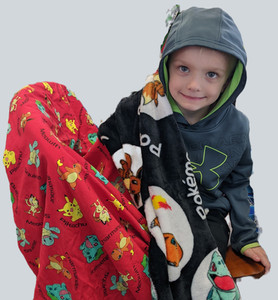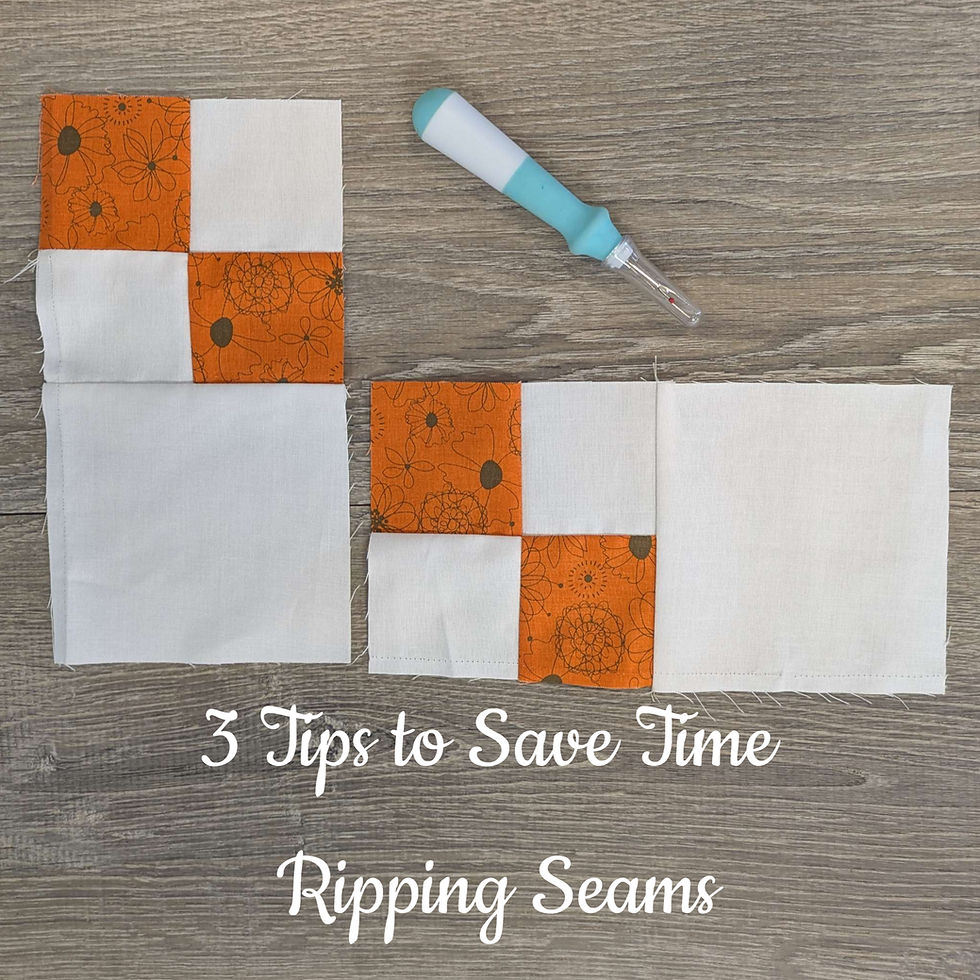How to Make a Cozy Reversible Blanket with Plush Fabrics
- Tara Wright
- Dec 4, 2023
- 5 min read
Updated: Dec 11, 2023
Hi friends! It's Round 2 in my Blanket series. Today I am working on a plethora of everyone's favorite - the reversible plush blanket! Why is this one the fave? It's because there are TWO fabric choices and one is fun and the other is super soft! I love to share my love of fabric and making with my grandchildren plus there is a little teachable moment for picking COORDINATING colors or prints.

These reversible blankets are good for people of ALL ages from toddler to grandparent - useful for napping, watching the game or movie on the couch, extra coziness in bed, or even extra snuggling in the car during a long-ish drive.
Choosing the Fabrics
Since there are two fabrics to choose and most "plush" fabrics come in 54" - 60" widths I am providing some guidelines and information to help you make wise choices AND do less math (you're welcome)!
First, choose a cotton fabric - usually a fun print - holiday, team, floral, animals, plaid, or solid if your plush has a print, etc.
Next choose a coordinating cozy fabric like flannel, minky, fleece, plush/cuddle, or faux furs. There are things to consider when making your choice:
I recommend faux fabrics similar to sheep/dog fur (see middle pic above) not Chewbaca (long and hairy) - remember you have to sew it with your machine!
These fabrics have various amounts of "stretchiness" so give them a little tug before you choose because more stretch makes it trickier to stitch.
Look at the top of the fabric bolt to see the width dimension for your choice: cotton is 42/44" while most plush fabrics are 54" or 60" wide. You need to know this for getting your fabric cut and make sure that if your print is directional you get enough fabric. See below.

*This size is very typical for throws, wheelchair blankets, stadium blankets, etc.
A little more explanation of the "custom" size - I am making a blanket for someone who is 6 ft 3 in tall (75 in), so I need a minimum of 81 in of fabric length. So I am buying 2 1/4 yds of plush fabric (81 in) and 4 1/2 yds of regular cotton fabric. You would then cut it into two pieces at a length of 81 in each and sew together with a vertical seam. This will make it 84 in wide so you would then need to trim 15 in off each side to keep the seam centered and make the width 54 in.
(On rare occasion there are certain prints of cotton fabric sold at 54" width)

This is also the same process you would use if you have a directional print (like a stripe), depending on if you need to make your top longer or wider, you would buy double the fabric and piece the top either vertically or horizontally. If you need help with this hit the "Let's Chat" icon and I can help you. I will also revisit this topic in a future post or freebie printable.
Onward - Cutting and Pinning Time!
Now that you have fabric (and thread and a sewing machine), it's time to prep the fabric for sewing. This means iron the fabric and trim or square up the edges on the cotton fabric (or I may refer to it as the TOP fabric). If you want rounded corners to reduce the bulk of the plush fabric and make the stitching quick and easy - this is the time to cut them. If you don't know how, you can learn from my previous post click on the link below:

Next it's time to pin, so lay the plush fabric down on the cutting mat right side up (so you can see the good fluff or pattern). Then lay the cotton fabric right side DOWN on top of the plush. Smooth it out and start pinning. Here are my tips:
Pin down the center (at least) and around the entire edge. You can certainly pin more. This fabric will want to move as you sew because it is slippery - so don't scrimp on the pins.
Straight pins are good, but safety pins work better because they don't move as much and won't poke you. This fabric is stretchy and slippery so hold it taut (NOT stretched) while you pin to prevent excess plush fabric.
The cotton will shrink when you wash it, but the plush will not because it is polyester. If you use flannel on the back - it will behave like the cotton.
Just know if you do have excess fabric when it is all finished - your recipient will still LOVE it!
Once the pinning is done, trim off excess plush fabric but NOT right to the edge of the cotton. Give yourself a little extra at the edge to hold the fabrics while you stitch and help keep the plush taut.

Sewing Time
This blanket is finished using a pillowcase edge. A pillowcase edge is simply the turned edge you get when you sew two fabrics with right sides together and then turn them inside out. So pick a starting place and starting stitching along the edge of the cotton. Here are a few tips:
Use a walking foot if possible to help with the dual fabrics and slipping.
Hold your fabrics taut and together. Use a straight stitch 1/4 or1/2 inch away from the edge.
Lock your stitches at beginning and end.
Go around the entire perimeter of the blanket and stop 5-6 inches from your start. You need enough space to fit your hand inside to turn the fabrics right side out.

If you made rounded corners, then cut little snips into the seam allowance of the fabrics to help it stretch. Do NOT cut all the way to the stitches.
After turning the fabric right side out, close that hole with a whip stich or with your top-stitching.
Top-stitch for a finished look.
Never iron/press minky or any polyester fabric without a pressing cloth - it can melt the fabric (possibly to your iron too)!
If you need more details you can read my post about this technique using the link below:
Also you can make a quick quilt using this method. Just add a layer of batting or fleece as the bottom layer when you pin and sew. And when you turn the fabric right-side out make sure you pull bewtween the 2 fabrics so the batting stays on the inside. Top stitch and add a little quilting to finish - ta-da!
Finishing Touches
If you found a little excess fabric on the plush side, you can help it look a little better and more even by putting in some "stay" stitches. Just randomly palce any of the following stitches by hand or machine.
Knots with a needle and thread - just go in one side, make little stich, and go out to the starting side, cut, and tie a double knot (square knot) with the tails.
Make random small X stitch patterns with your machine - stitch a couple stitches, reverse to halfway, pivot and stitch the other line, lock stitch.
Or just make random little straight lines with your machine and lock stitch.

I hope you enjoy making this kind of blanket and have many happy recipients!
I love to see your work! Share your progress on social media by tagging me @polkadotpeepquiltsetc on Instagram or Facebook. Follow me on either platform for more sewing fun or sometimes designing, cooking, family adventures, or other tidbits.
If you have questions, you can ask me in the comments or almost live by using the "Let's Chat" button. If you have comments or tips for working with cuddly, stretchy fabrics please share below. Community with like-minded friends of all ages and skill levels is so important.
Happy Holidays & Be blessed my friends,
Tara




















Comments